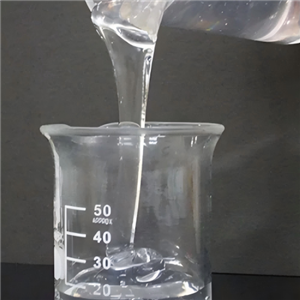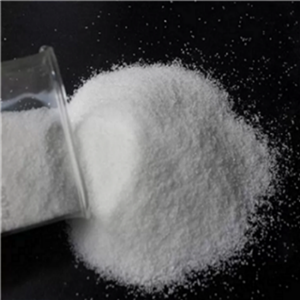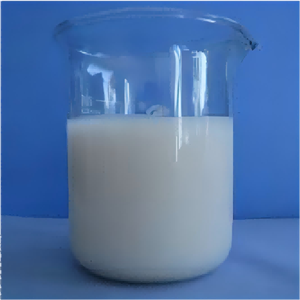What are the technical means to enhance the broad-spectrum applicability of the fast acting demulsifier?
1. The design and optimization of the molecular structure of fast acting demulsifier:
1). Introduction of multifunctional groups: Introduce a variety of functional groups with different properties into the molecular structure of the fast acting demulsifier, such as lipophilic groups, hydrophilic groups, ionic groups, etc. The lipophilic group can interact with the oil phase, the hydrophilic group can combine with water and the ionic group can enhance the demulsification effect through the action of charge. For example, for a complex system containing both oil-in-water and water-in-oil emulsions, a fast acting demulsifier with both lipophilic and hydrophilic properties can play a better role, break different types of emulsion structures and improve broad-spectrum applicability.
2). The adjustment of the branched chain structure of the fast acting demulsifier :
Design fast acting demulsifier molecules with suitable branched chain structures. The presence of branches can increase the steric hindrance and flexibility of fast acting demulsifier molecules, making it easier to diffuse and penetrate in different emulsion systems, thereby increasing the contact area and effect with the emulsion interface. For example, when facing a high-viscosity emulsion, the branched chain structure can help the fast acting demulsifier to better disperse and play a demulsification role.
2. The compounding technology of fast acting demulsifier:
1). Compounding of different types of oilfield demulsifier: As a demulsifier of supplier, Jiufan Tech has been devoting ourself to compound of different types of oilfield demulsifier for 20 years, such as combining nonionic oilfield demulsifier with ionic oilfield demulsifier. Nonionic demulsifier have good stability and salt resistance, while ionic demulsifier have advantages in charge effect. The two can complement each other after compounding to enhance the demulsification ability of demulsifier for emulsions of different properties. For example, when dealing with complex emulsions containing multiple surfactants, compound oilfield demulsifier can comprehensively play the role of different types of oilfield demulsifier and improve the demulsification effect.
2). Compounding with other additives: Compounding oilfield demulsifier with other additives such as flocculants, cosolvents and surfactants. Flocculants can help accelerate the aggregation and precipitation of oil droplets or water droplets after demulsification; cosolvents can improve the solubility and dispersibility of oilfield demulsifier in different solvents; surfactants can adjust the interfacial properties of emulsions, making it easier for oilfield demulsifier to work. Through reasonable compounding, the overall performance and broad-spectrum applicability of oilfield demulsifier can be improved.
3. Develop demulsifier additive for crude oil using nanotechnology :
1). Nanoparticle modification: As a demulsifier of supplier, Jiufang Tech has been using nanoparticles to modify demulsifier additive for crude oil and prepare nanocomposite demulsifier additive for crude oil. Nanoparticles have a large specific surface area and special surface effects, which can enhance the interaction between fast acting demulsifier and emulsion interfaces. For example, combining nanoparticles such as nanosilica or nanoiron oxide with fast acting demulsifier can improve the demulsification speed and efficiency of demulsifier, while increasing adaptability to different types of emulsions.
2). Nanoemulsion preparation: Prepare demulsifier additive for crude oil in the form of nanoemulsions to improve the dispersibility and stability of demulsifier additive for crude oil. Nanoemulsions have a smaller particle size and can better penetrate into the interior of the emulsion and destroy the structure of the emulsion. This technology can make demulsifier more evenly distributed in different emulsion systems, thereby improving the demulsification effect and broad-spectrum applicability.
4. The intelligent response technology of demulsifier additive for crude oil:
1). pH responsive design: Develop demulsifier with pH responsiveness so that they can automatically adjust their molecular structure and performance under different pH conditions. For example, under acidic conditions, the molecular structure of the demulsifier changes, enhancing the demulsification ability of the acidic emulsion; under alkaline conditions, the structure and performance of the demulsifier additive for crude oil are also adjusted accordingly to adapt to the demulsification requirements of the alkaline emulsion. In this way, the demulsifier can play a good demulsification effect in emulsion systems with different pH values.
2). Temperature responsiveness design: Prepare temperature-responsive demulsifier so that they have different demulsification properties at different temperatures. For example, at low temperatures, the activity of the demulsifier is low and can remain stable; at high temperatures, the activity of the demulsifier is enhanced and can quickly demulsify. This temperature-responsive demulsifier can adapt to the emulsion demulsification needs under different temperature conditions and improve its broad-spectrum applicability.
5. High-throughput screening and R&D technology:
1). Experimental screening technology improvement: Use high-throughput experimental screening technology to quickly screen a large number of demulsifier formulas and structures. Through automated experimental equipment and data analysis systems, a large number of demulsifier samples can be tested in a short time to evaluate their demulsification effects and broad-spectrum applicability, so as to quickly find the optimal demulsifier formula and structure.
2). Theoretical simulation aids R&D: Use computer simulation technology to theoretically simulate and predict the interaction between demulsifiers and emulsions. By establishing emulsion models and demulsifier molecular models, simulating the diffusion, adsorption, interface action and other processes of demulsifiers in emulsions, the demulsification effect and broad-spectrum applicability of demulsifiers can be predicted. This can reduce the blindness of experiments, improve R&D efficiency, and provide theoretical guidance for the design and optimization of demulsifiers.




